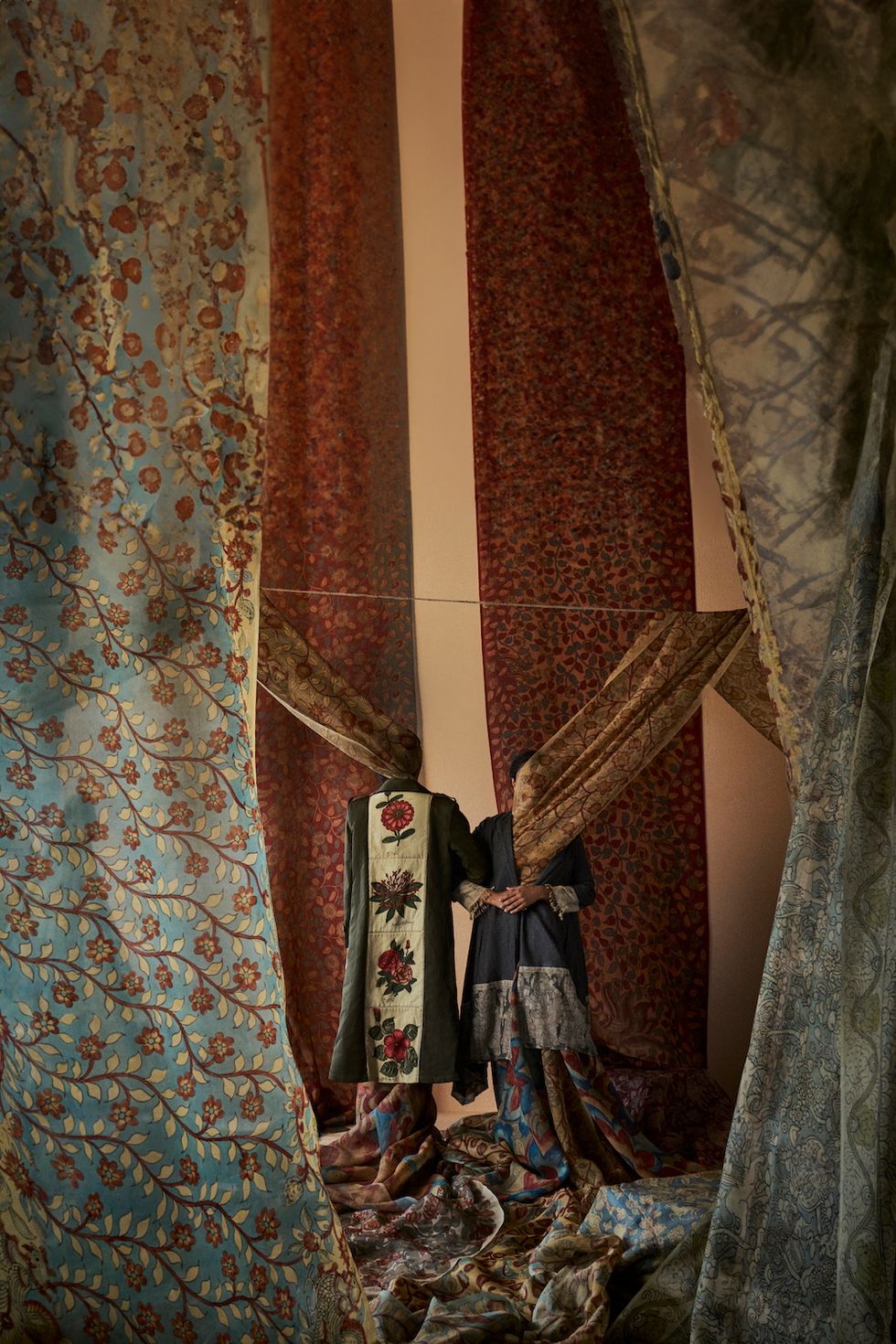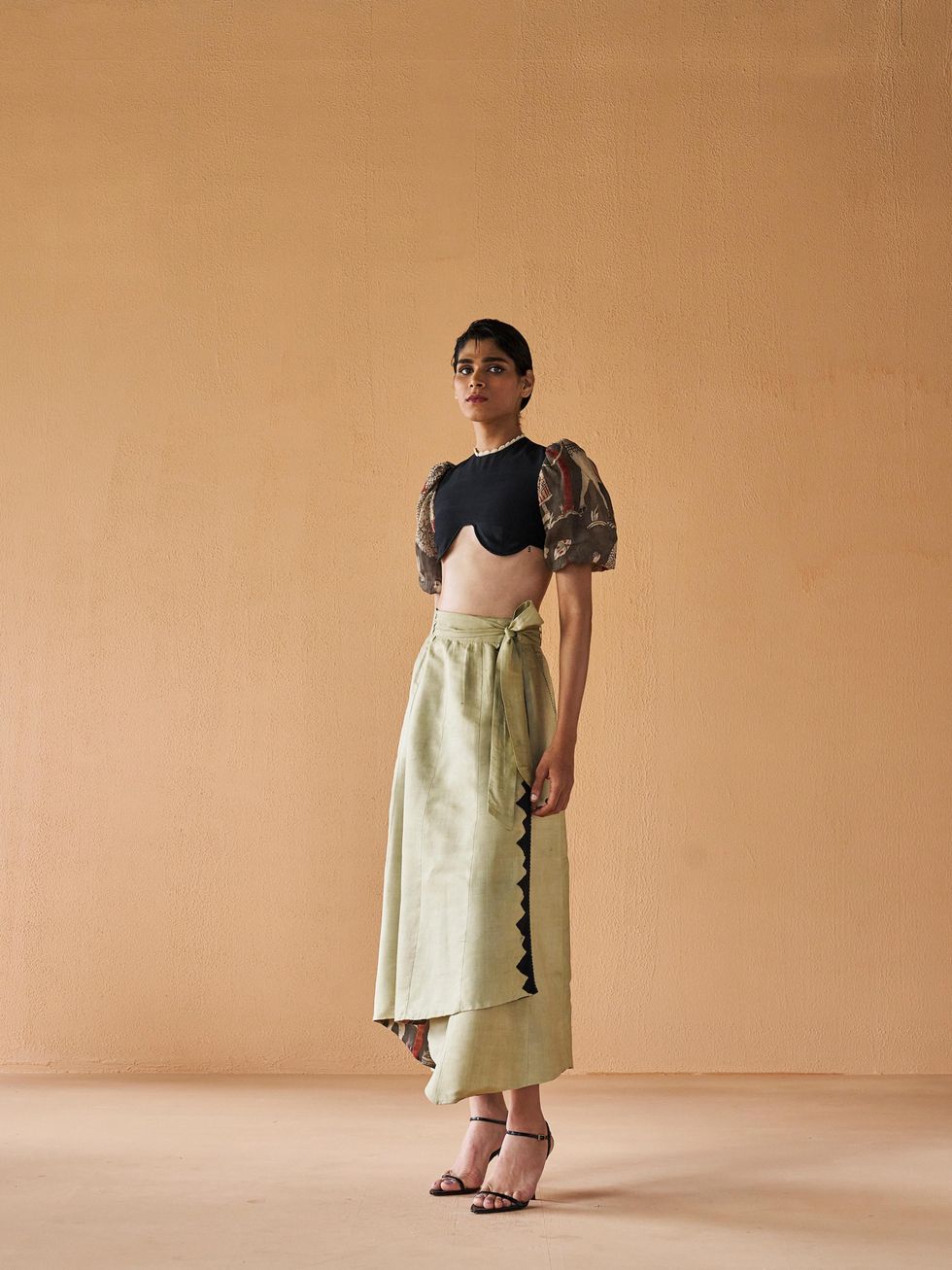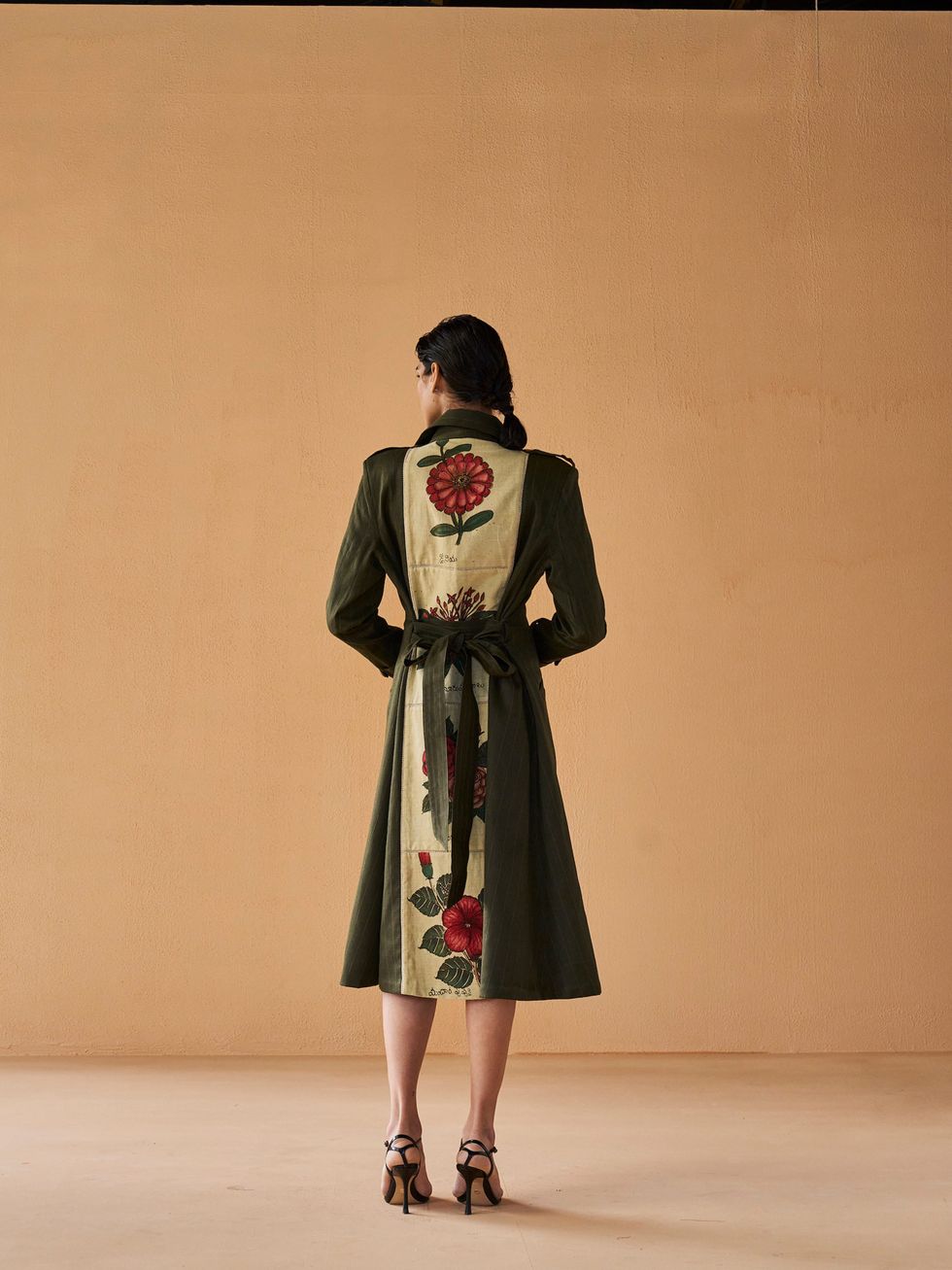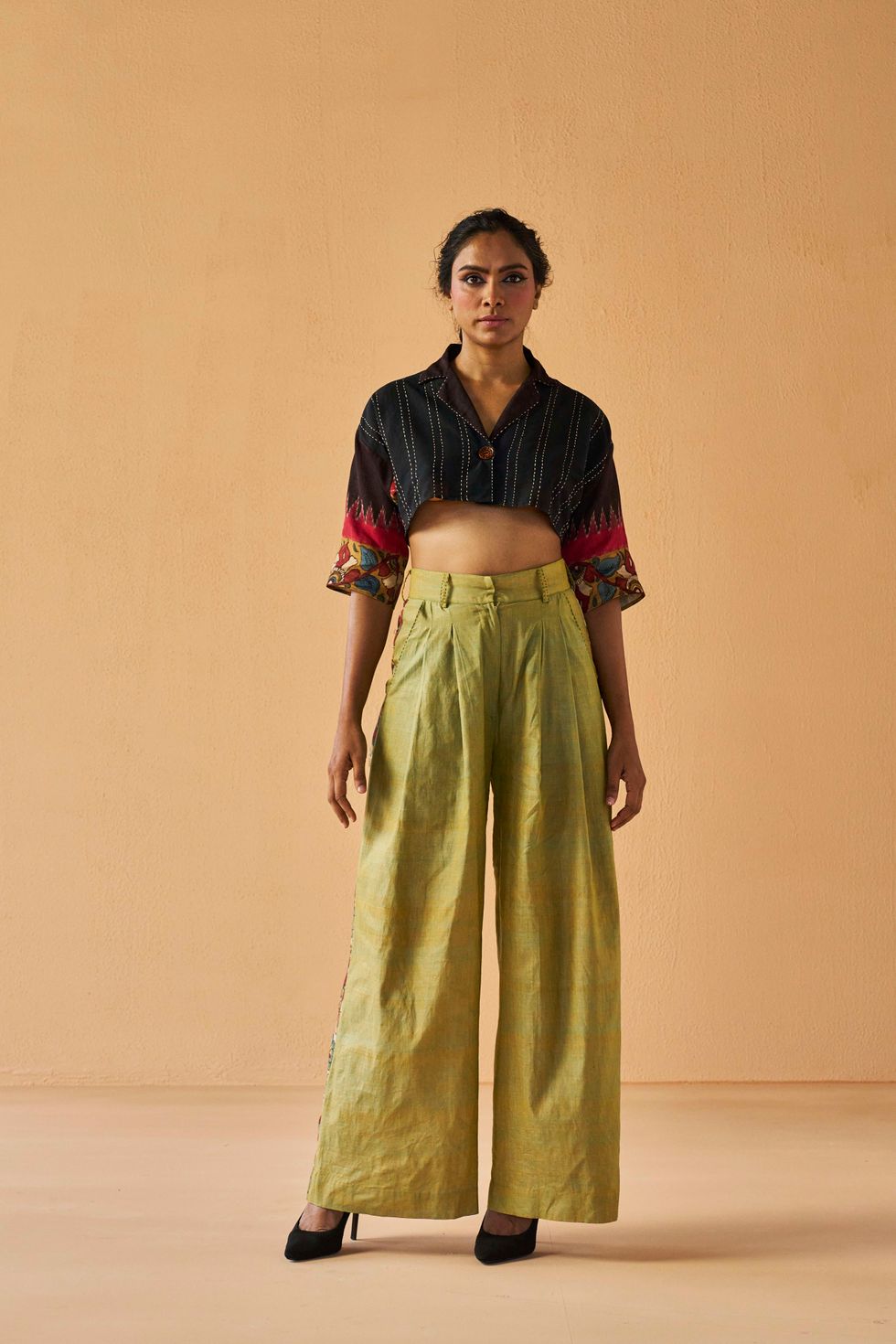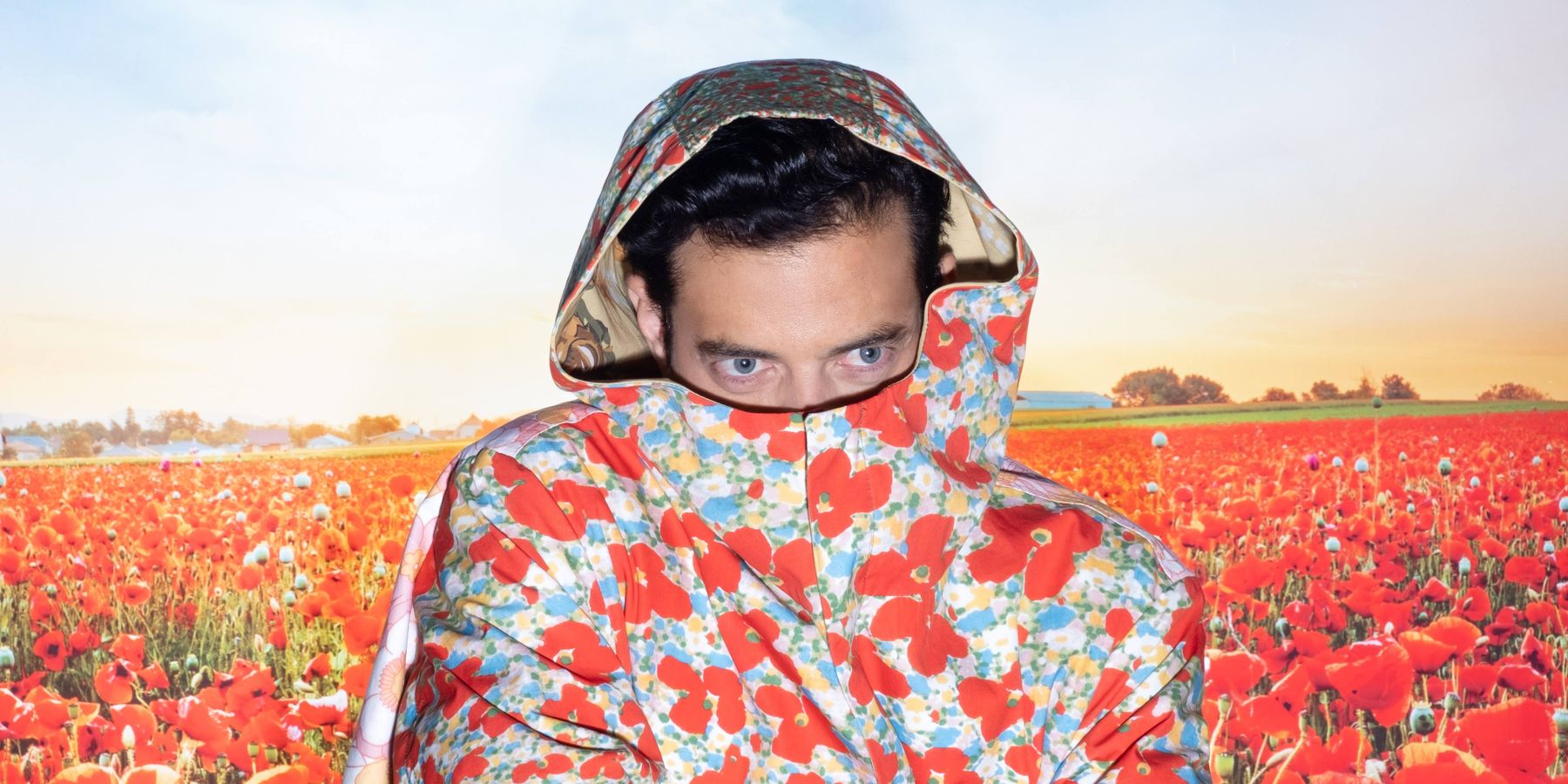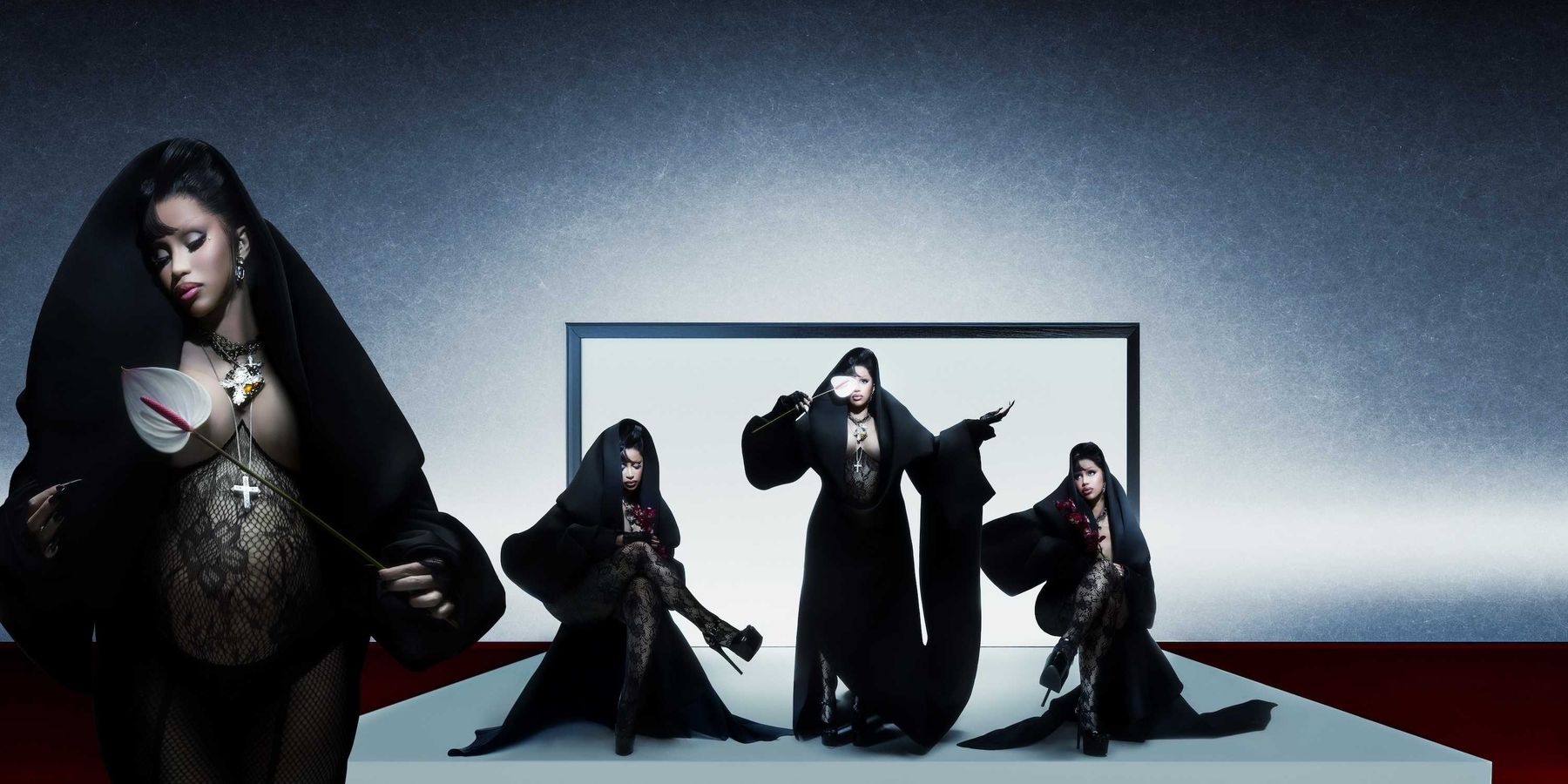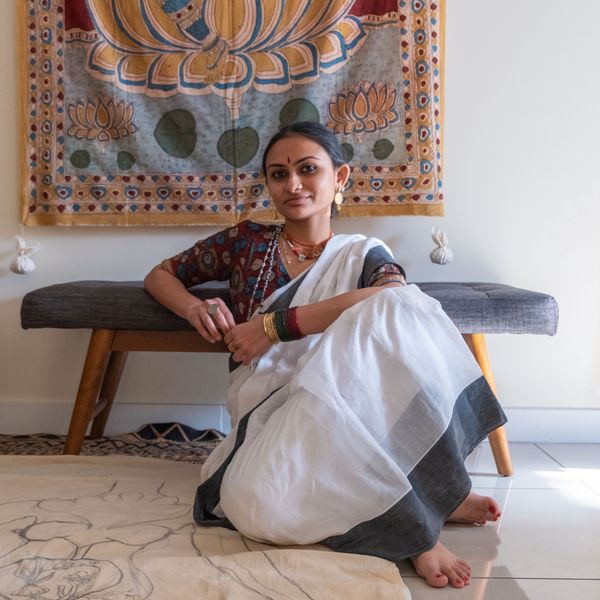
Untitle Is Slowing Down Fashion with Kalamkari
by Siddhant Talwar
Jan 11, 2024
Sustainability has been the newest old concept that has taken the world of fashion by storm. A wave of brands selling consciousness and green-washed designer collaborations with fast fashion brands has overshadowed indigenous practices around the world, who have been calling for a return to the sustainable roots of fashion and art with practice that is sustainable by form.
Kalamkari is an example of this form. Literally translating to “pen craftsmanship,” Kalamkari is a hand-painted or block-printed textile that is site-specific to the Andhra Pradesh and Telangana states of India and some traces in Iran. It involves a meticulous 23-step process with hand-drawn painting using a handcrafted bamboo pen-natural dyes and raw materials that would otherwise be rendered useless. Pomegranate skin, for example, is used to make a red, and dried flowers are used to make a yellow. This ancient craft has a rich history, starting as a form of story-telling by Chitrakars, who moved from village to village to tell stories of Hindu mythology. During Mughal rule in India, the craft was highly patronized and started incorporating Islamic imagery. During British colonization, artisans were devalued by the British, and their craft was stolen from them to be mass produced in Britain and then sold to the colonies for a premium. Thus, many artisans became producers of raw materials to serve the British Raj. There was a whole generational gap of artisans who had been made to forget their craft. Post independence, the craft was revitalized to both preserve it and help artisan families survive by giving them a means to earn.
Today, Kalamkari and similar indigenous sustainable techniques are breaking through to mainstream fashion globally. Nikita, an educator, textile expert and former head of design for Gaurang — one of India’s top ethnic wear designers and the founder of Untitle — is at the center of that movement in New York. Untitle is a slow fashion brand that focuses on a collaborative process of working with artisans to make everyday wear out of incredible Kalamkari textiles.
PAPER caught up with Nikita in her home studio in Brooklyn to understand how she preserves this tradition.
How did Kalamkari become your main practice? Did you study it in college?
Kalamkari came to me about a decade ago, in my 20s. But honestly, it all began with woven textiles. I was at NIFT in India and had to do my graduation project in Kenya where my dad was, but the visas didn’t work out. I ended up working in the Khadi Village Industries because that is what I could find last minute through a professor, and you know, I had to graduate.
Wow, that must have been a sudden change.
For the first month I was like, what the fuck am I doing here? I was in a government office, I didn’t know the systems except the little theory I’d studied in college. Also I grew up in Bombay and suddenly I was in Maheshwar, where everything shuts at 5 p.m., and you’re like, what do I do now? My 4 months in Maheshwar as a 19-year old was a time of unlearning and learning. Despite all this, it started feeling like home. It just felt like I belonged. It taught me how to slow down and just be with the ecosystem and how we can make textiles in a symbiotic way with the environment. Also, the community was so intrinsic to all the work we did. It wasn’t just a cool buzzword, but a way of life.
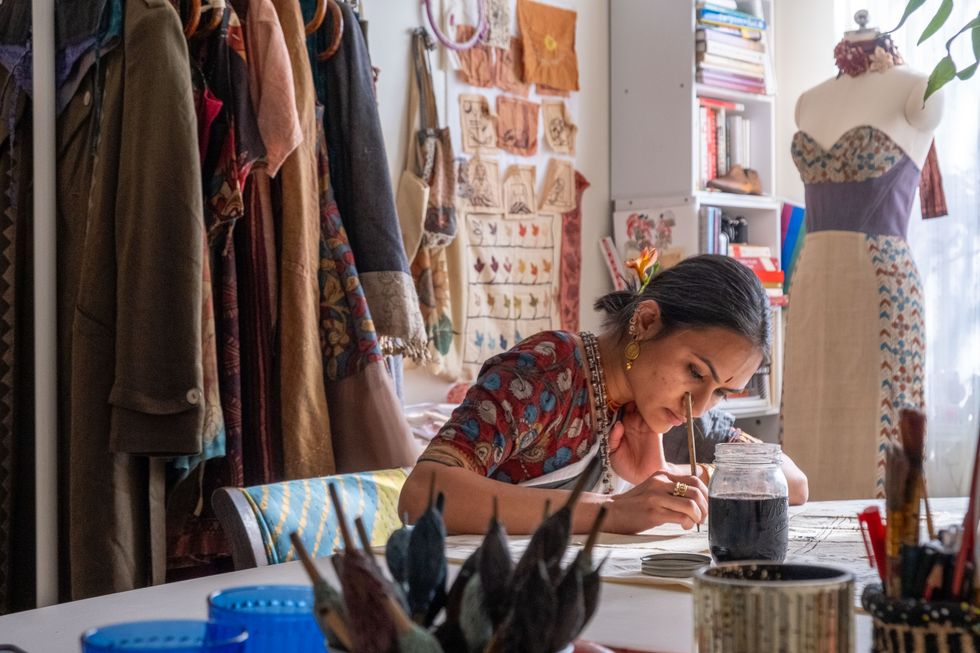
Is that how you transitioned to working with Gaurang Shah?
Yes, that experience was central. After graduating I was sure I wanted to spend the rest of my life with the artisan communities. Under Gaurang, I kept traveling around India, meeting artisans and learning their techniques. The community aspect really was central to all of my work. I would be in places without any hotels nearby, and people would open their homes to me. They did not only teach me textiles but made me meals and made me feel at home.
That’s the thing about India, right?
Yeah, and I think that is what gives me the drive and passion to keep working with Indian textiles and advocating for them, using the privilege I have to speak their stories.That's where Untitle also began.
How did you decide to come and work in the US? Why not continue working in India where you’ve established yourself?
I came here for my Master's at FIT! The plan was to study for a year and then move back, but I ended up staying back because I realized that there is no knowledge of Indian textiles here. People think Indian clothes are what they see in Bollywood.
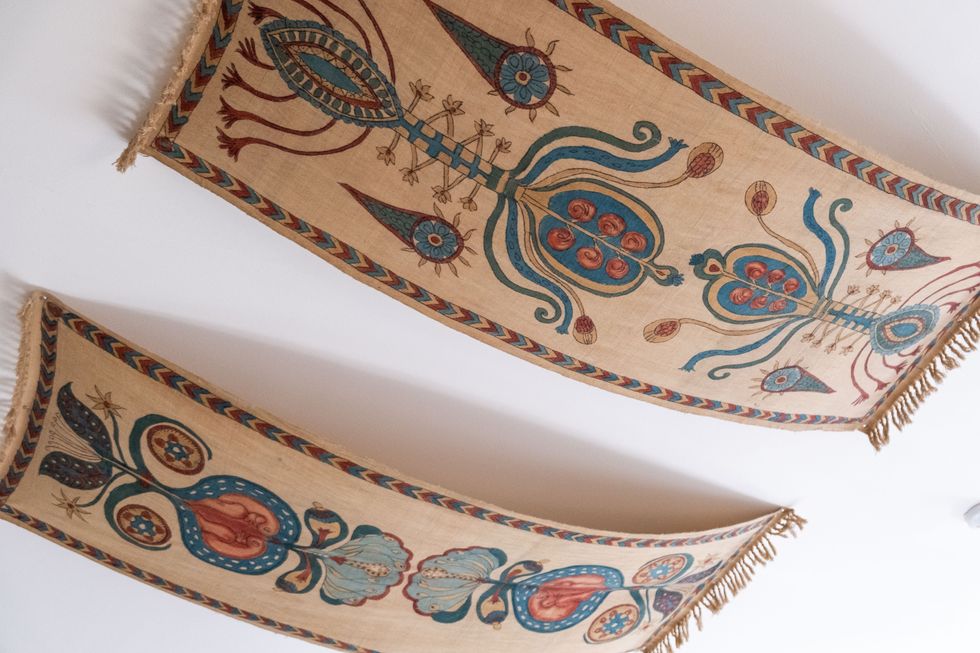
And those are costumes, not everyday fashion.
Exactly. I wanted to have a role in bridging this knowledge gap, even within the South Asian diaspora! I actually started by upcycling Indian sarees that my diasporic friends had and started making them into more usable clothing. I might be wearing saris everyday, but they have grown up and live in a different context. It’s not like back home where you have these textiles with intricate patterns that are in everyday wear. Here, the problem was how do I incorporate these incredible textiles and make them into clothes people could wear to work everyday.
And I notice that with your clothes there are a mix of styles.
I really wanted to do that. I want people to look at these as beautiful textiles and clothes like you would at any brand on 5th Avenue or SoHo. But especially for my diasporic friends, for them wearing a jhumka with pants, or wearing a desi print, is an identity affirming experience. So I got to learn from them and their upbringing and was like,I need to make something more corporate and a little more bohemian. So the idea of Untitle was not to follow a season, but to make clothes that can be worn in multiple ways, while incorporating Indian crafts and textiles.
Was it hard incorporating your style, knowledge and sustainability practice with a western institute like FIT?
Oh, my professors at FIT hated me. I came to the US with a suitcase full of handloom textiles, and I would hound professors to contextualize their assignments to my fabrics. Even if they needed longer fabrics that cannot be made on the handloom, I would tell them I do not care. That process did teach me and them a lot. Eventually all the professors did not mind it either.
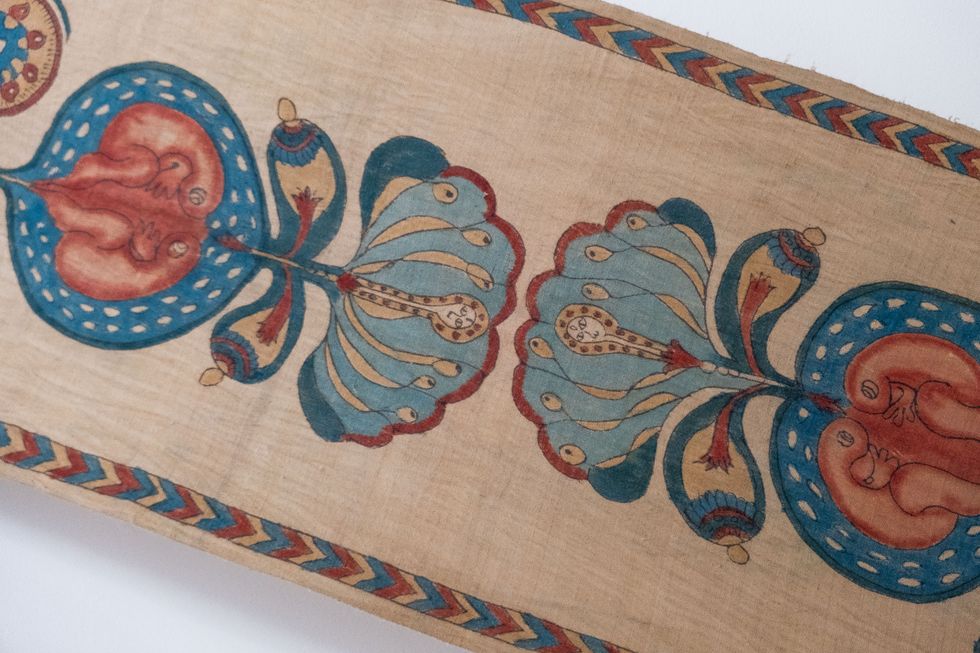
When you started Untitle, how did you collaborate with your network of artisans? I presume you aren’t doing all the Kalamkari work here.
Yeah, that would be impossible. I, of course, have the materials and teach people the craft and make some art, but the bigger textiles I have, I make in collaboration with Mamata Reddy — even my artworks. She’s been central to reviving Kalamkari in India.
That must be an interesting experience.
Absolutely, I made these two pieces during Roe v. Wade rulings in the U.S., and I would send the artisans my sketches and drawings. These men would be like, “Why are we making a uterus and vagina?” That is weird to them, of course! But they help me expand beyond my thinking too. They incorporate their ideas and their notions too, which is why I say this work is made in community, not just by me.
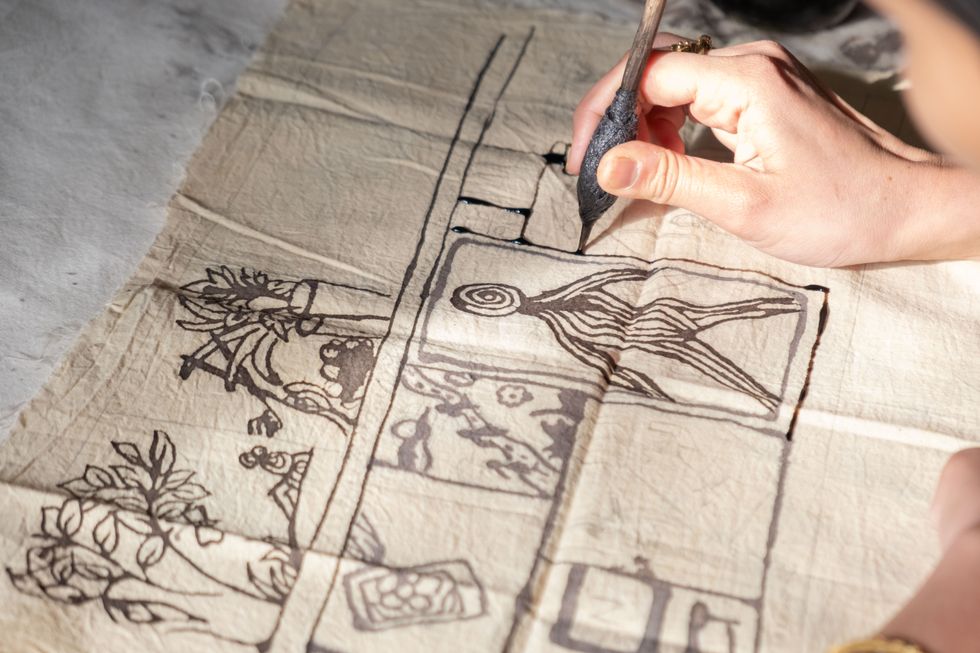
I noticed that you said men, which is interesting because a lot of these artisans are men in India. Why is that?
I mean, I think we all know why. And women have such an essential role in Kalamkari. They make the dyes. They get the raw materials. They treat the cloth. They do everything. It’s like wo puri daal banati hai aur phir aadami aake tadke laga deta hai (they make the whole dish, and then the men just add a garnish and get the credit). But also these men are not treated like artists in the fashion market, but as laborers. They know so much, like what yarns to use and how to dent a handloom to get a little differently etc. But that is what colonization really did to us. It devalued cultural workers because everything needed to be mass produced and cheap. Even now, people come from metropolitan cities to work as designers, and they end up being just like, why should I use my head here? I will just do the work.
It's great to have this kind of institutionalized knowledge, which has helped me, but it's bringing both of it together. And when I am coming with my set of, say, formal education, he is coming with his own skill set, and we are coming together. There should be no hierarchy, right? It is coming together. It is co-creation.
What issues have you come across with showing your work here? Do people recognize that it's Kalamkari?
I mean it depends. There’s always, ”This doesn’t have a lot of beads. Why is it so expensive?” This is handmade, hand drawn and made across continents! Honestly, you’re paying for the skill. I need the artisans and myself to be paid fairly.
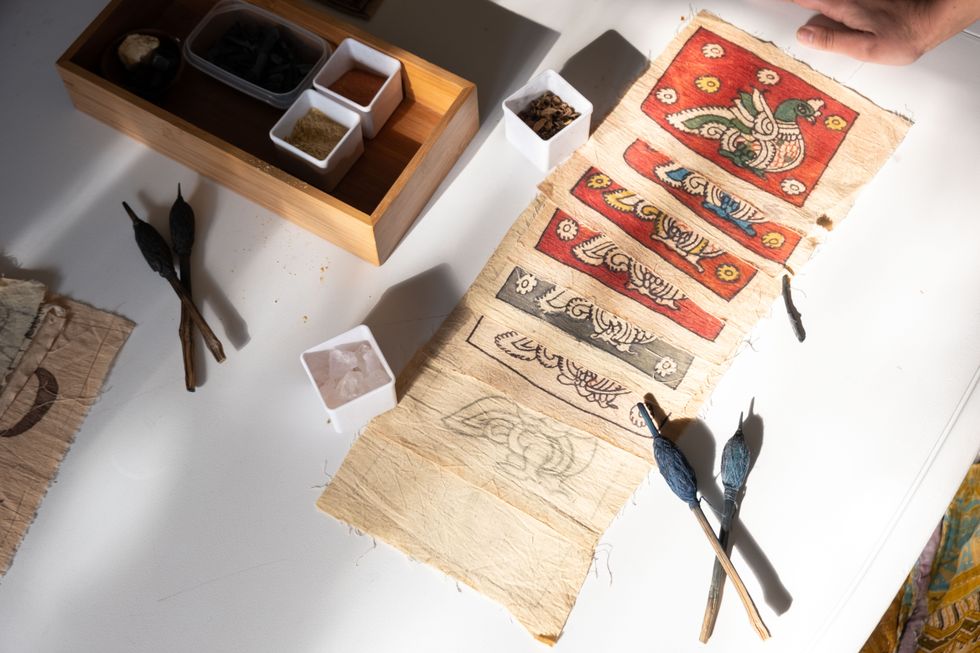
So what’s next?
We have to go to the past to think of our future, so I am doing that. I am thinking a lot about sustainability and how if we want to truly be sustainable, we won't buy a lot of clothes — just select pieces. Just learn from your grandmothers. Learn how they consumed in their youth and how they saved up for that one Sari, wore it different ways for the rest of their life and then even passed it down. I think there can be ways sustainability can be affordable but not inexpensive.
Last question: Why New York?
I came to New York to push myself. Europe has much more value for a craft like this, but New York is a place where a lot of people need grounding. There’s so much happening. Nobody feels like they are doing enough. I am here to say it's ok. Take a minute. Let's be slower. Be in fursat.
Photography: Siddhant Talwar
From Your Site Articles
MORE ON PAPER
Entertainment
Cynthia Erivo in Full Bloom
Photography by David LaChapelle / Story by Joan Summers / Styling by Jason Bolden / Makeup by Joanna Simkim / Nails by Shea Osei
Photography by David LaChapelle / Story by Joan Summers / Styling by Jason Bolden / Makeup by Joanna Simkim / Nails by Shea Osei
01 December
Entertainment
Rami Malek Is Certifiably Unserious
Story by Joan Summers / Photography by Adam Powell
Story by Joan Summers / Photography by Adam Powell
14 November
Music
Janelle Monáe, HalloQueen
Story by Ivan Guzman / Photography by Pol Kurucz/ Styling by Alexandra Mandelkorn/ Hair by Nikki Nelms/ Makeup by Sasha Glasser/ Nails by Juan Alvear/ Set design by Krystall Schott
Story by Ivan Guzman / Photography by Pol Kurucz/ Styling by Alexandra Mandelkorn/ Hair by Nikki Nelms/ Makeup by Sasha Glasser/ Nails by Juan Alvear/ Set design by Krystall Schott
27 October
Music
You Don’t Move Cardi B
Story by Erica Campbell / Photography by Jora Frantzis / Styling by Kollin Carter/ Hair by Tokyo Stylez/ Makeup by Erika LaPearl/ Nails by Coca Nguyen/ Set design by Allegra Peyton
Story by Erica Campbell / Photography by Jora Frantzis / Styling by Kollin Carter/ Hair by Tokyo Stylez/ Makeup by Erika LaPearl/ Nails by Coca Nguyen/ Set design by Allegra Peyton
14 October
Entertainment
Matthew McConaughey Found His Rhythm
Story by Joan Summers / Photography by Greg Swales / Styling by Angelina Cantu / Grooming by Kara Yoshimoto Bua
Story by Joan Summers / Photography by Greg Swales / Styling by Angelina Cantu / Grooming by Kara Yoshimoto Bua
30 September
